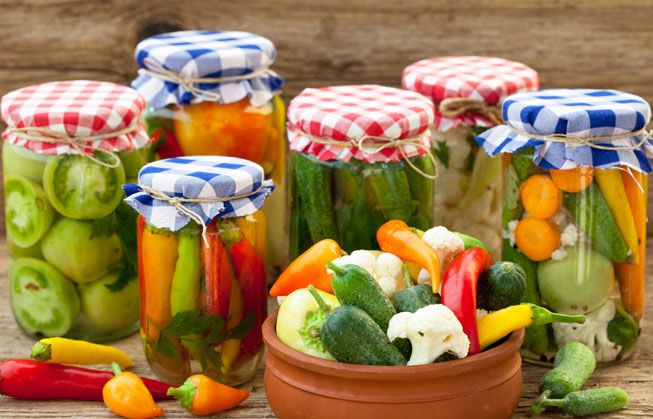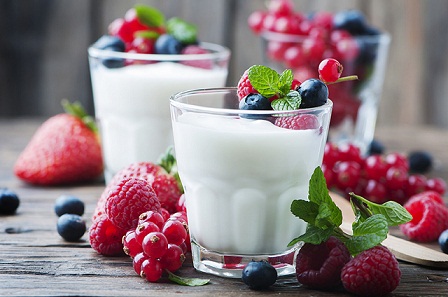9 Essential Prebiotic and Probiotic Winter Meals For a Healthy Gut
There are some winter probiotics that you should know about! When it’s chilly outside, you might want nothing more than a warm tasty treat and cup of sweet hot cocoa, but your gut microbiome is quietly asking for other foods that are far healthier and just as tasty!
If you’re looking to improve your body’s health in the new year, a great place to start is from the inside out, and a big part of that means improving your gut microbiome by introducing billions (that’s right, billions) of helpful and healthy microbes to your stomach, intestines, and the rest of your digestive tract.
In fact, because one of the primary improvements a healthy gut microbiome can make to your body is to boost your immune system, making winter probiotics a part of your new diet could keep you healthy all winter long!
The reason why is because we as humans have co-evolved with the microbes that live inside our gut. They help us digest food and regulate our metabolism, they help bolster our immune system and reduce inflammation. These microbes can also help synthesize vitamins, they can even make serotonin that literally makes us happier.
If it’s not clear by now, winter probiotics are crucially important if you want to be as healthy as possible. There are two ways to improve the diversity and number of healthy microbes in your gut. One way is by ingesting prebiotics – they help feed micro-organisms the nutrients they need to grow. The other way is by ingesting probiotic rich foods to introduce those healthy mircrobes to your body.
Here are a few foods that can help you bolster your winter probiotics:
First, let’s go over the prebiotics that you can quickly and easily add to your diet today to start improving your stomach’s ability to feed helpful micro-organisms.
The winter prebiotics:
Garlic, leeks, and onions
Garlic, onions, and leeks are tasty, aromatic, and packed with fiber to help feed the microbes your body needs to be at its best. Here are some recipes that you can bring to your family’s dinner table to make sure everyone is getting their daily dose of fiber. Consider these quick recipes to improve your winter probiotics.
- Fried cabbage with bacon, onion, and garlic – it’s hearty, healthy, and will warm the bones on even the chilliest of days
- Spicy pepper and onion – add it as a side to your favorite protein, or simply put it over a bed of quinoa or rice for a quick and vegetarian meal
- Potato leek soup – this incredibly simple recipe will be great as a side dish or as a meal on its own. Add a dollop of plain greek yogurt to mix in some probiotics to this meal.
Kiwis and bananas
It can be hard to come by fresh fruit during the winter, but these two are available fresh all winter long and can add a splash of tropical flavor to your hearty and heavy winter diet. They pack a punch when it comes to fiber, vitamins, and other important things that can help improve your gut microbiome.
- Kiwi salsa – this is great as a dip with corn or pita chips or can be a fantastic marinade or topping to chicken or fish. Add onion and hot peppers to balance the sweetness of the kiwi with some acid and spice.
- Banana smoothie – bananas make a great base to basically any smoothie. Add what ever fruits or vegetables you want and be sure to add some plain or flavored probiotic yogurt to get a creamy consistency with some great probiotics inside to boot!
- Baked bananas – warm bananas baked with a chocolate sauce, walnuts, and a hint of nutmeg and cinnamon. They’re delicious, simple, and make for a warming treat or dessert.
Now, let’s go over some of the best sources of winter probiotics for you to make sure you are at your healthiest all winter long.
The winter probiotics:
Sauerkraut
Fermented foods are one of the best sources of winter probiotics that you can give your body, and they have a lineage of being a winter food for thousands of years. The reason why our ancient ancestors used to ferment foods is because they help organic material last much longer than non-fermented foods. Little did our ancestors know, they were improving their gut microbiome all winter long! Now you can too.
- Use sauerkraut as it was meant to, as a topping to a delicious sausage meal – Sure, you don’t want to eat this cholesterol and fat-heavy treat on a regular basis, but it certainly will warm your bones when the weather outside is frightful.
- Fresh carrot slaw – combine sauerkraut, grated carrots, and chopped parsley to create a fresh, zingy, and easy side salad or topping.
- Put it in a smoothie – maybe this sounds a little bit crazy, but if you’re making green smoothies to get your necessary greens, a spoonful of sauerkraut and some sauerkraut juice can add a interesting and delicious flavor to the mix.
Kimchi
Much like sauerkraut, kimchi is fermented cabbage and other vegetables that adds an acidy, spicy, and delicious topping and ingredient. First originating in Korea, Kimchi has recently taken the West by storm. There are a ton of ways to integrate into your favorite, or your new favorite meal for a winter probiotics boost.
- Kimchi fried rice – this delicious and warming meal is just like your favorite bowl of fried rice, but with an added zing thanks to the kimchi that you fry alongside it. It’s smokey, it’s filling, and most important, it’s a great source of winter probiotics.
- Kimchi stew – this might take a little prep time, because it is a fully involved recipe, but oh boy is it worth it. This is an ultra comforting spicy stew that is filled with delicious fatty pork, veggies, tofu, and of course kimchi. See more Kimchi Recipes here
Yogurt and Kefir
This is a fantastic source of winter probiotics all year round, but it is important to keep in mind that the label of the dairy product you use includes the word “live active cultures” on the label. These cultures are the probiotics that your body wants so that it can be as healthy as possible. Here are some great ways to use yogurt in some conventional – and less conventional ways – to get those tasty winter probiotics.
- Authentic tzaziki sauce – take your favorite probiotic greek yogurt and mix it with chopped cucumber, fresh dill, olive oil, salt, and pepper for a delicious topping to your favorite salad, chicken, even eggs!
- Fruit smoothie with kefir – kefir will create a smooth and creamy consistency for your favorite fruit yogurt and will add a nice sharp tang to contribute to a little complexity within the flavor.
- Classic yogurt bowl – there’s nothing wrong with a classic bowl of your favorite yogurt. Mix fresh fruits, chia seeds, honey including manuka honey, or for that matter, anything you want!




